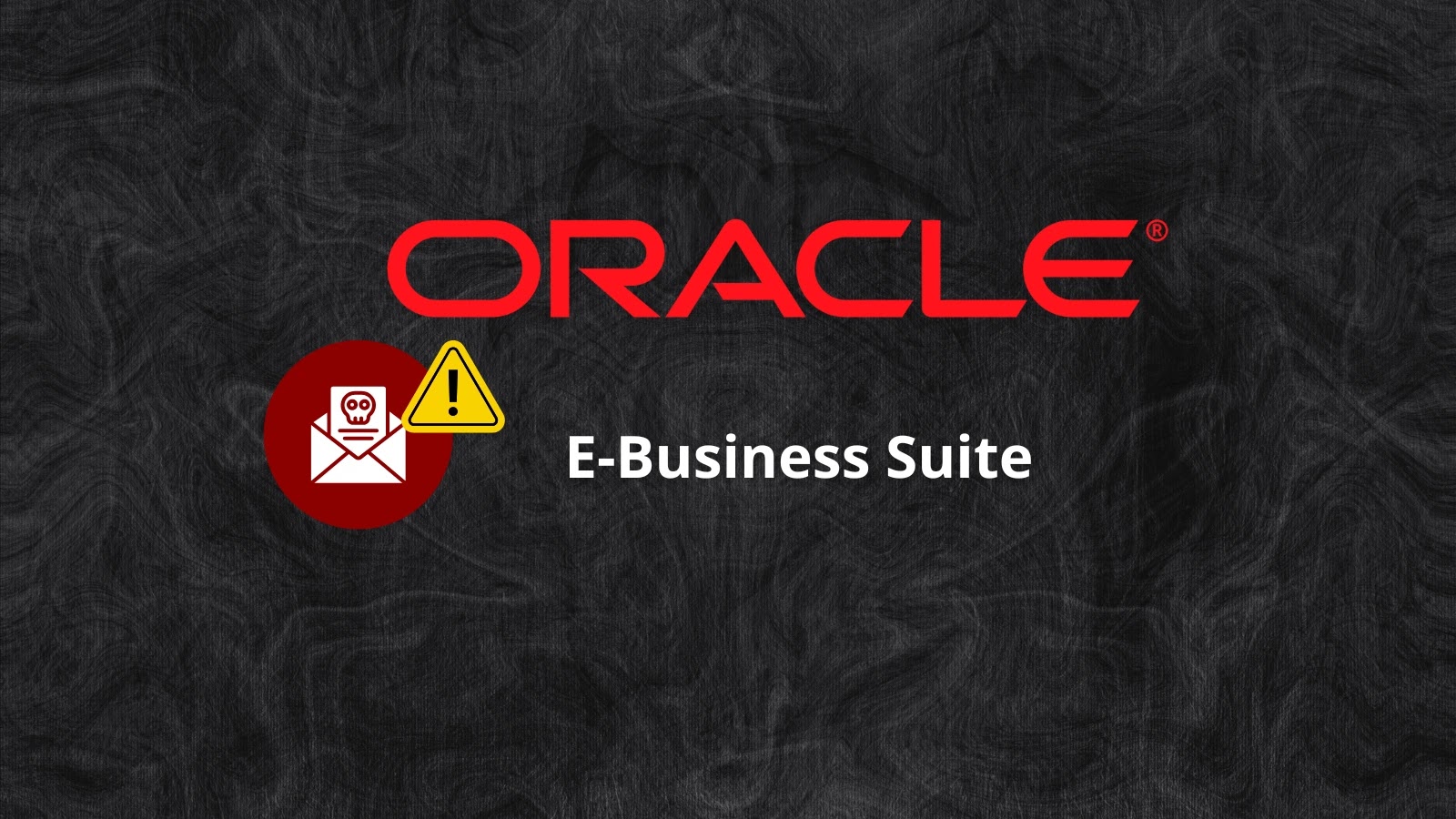
Oracle Confirms that Hackers Targeting E-Business Suite Data With Extortion Emails
The digital landscape is a constant battleground, and even the most established enterprise systems aren’t immune to attack. Recent revelations from Oracle confirm that cyber adversaries are actively targeting customers of its E-Business Suite (EBS) platform, employing sophisticated extortion campaigns that leverage previously patched vulnerabilities. This isn’t just another security alert; it’s a stark reminder of the critical importance of timely patching and robust security postures for organizations relying on enterprise resource planning (ERP) systems.
Oracle E-Business Suite Under Threat: An Overview of the Extortion Campaigns
Oracle, a cornerstone of enterprise software, officially acknowledged the ongoing threat to its E-Business Suite users. Rob Duhart, Oracle’s Chief Security Officer, confirmed that these insidious attacks exploit vulnerabilities that Oracle had already addressed in its July 2025 Critical Patch Update (CPU). This timeline is crucial: the attacks are not exploiting zero-days but rather security holes that organizations should have already mitigated. The method of attack involves extortion, suggesting that sensitive EBS data, which often includes financial records, customer information, and supply chain logistics, is being held for ransom or threatened with public disclosure.
The Persistent Threat of Unpatched Vulnerabilities
The core of these extortion campaigns lies in the exploitation of unpatched systems. While Oracle released fixes in its July 2025 CPU, a significant number of organizations appear to have lagged in applying these critical updates. This creates an open door for malicious actors. It’s a common narrative in cybersecurity: vendors release patches, but the operational realities of massive enterprise environments, such as Oracle E-Business Suite, often delay their deployment. This delay, however, can come at a steep cost, as evident in these ongoing extortion attempts. The specific CVEs targeted in these attacks, though not fully detailed in the provided source, would originate from the July 2025 CPU. For instance, a hypothetical vulnerability could be CVE-2025-12345, which might have addressed a critical remote code execution flaw.
Understanding the Impact on Oracle EBS Environments
Oracle E-Business Suite environments are treasure troves of critical business data. A successful compromise can lead to:
- Data Exfiltration: Sensitive financial, customer, employee, and proprietary business data can be stolen.
- Operational Disruption: Extortion demands often come with threats of system lockout or data destruction, halting business processes.
- Reputational Damage: A data breach or successful extortion campaign erodes customer trust and harms brand reputation.
- Financial Penalties: Regulatory fines and legal liabilities can arise from compromised personal data.
The targeted nature of these attacks, focusing on extortion, indicates that the attackers are not just looking for a quick hit but are aiming to maximize their financial gain by leveraging the criticality of the data housed within EBS.
Remediation Actions: Securing Your Oracle EBS Installation
For any organization running Oracle E-Business Suite, immediate and decisive action is paramount to mitigate the risk of falling victim to these extortion campaigns. While the specific CVEs from the July 2025 CPU are not provided, the general principle of patching remains the most effective defense.
- Apply All Critical Patch Updates (CPUs): Ensure that all Oracle E-Business Suite environments are updated with the latest Critical Patch Updates, especially the July 2025 CPU and subsequent ones. These updates often contain critical security fixes for vulnerabilities.
- Regular Vulnerability Scanning: Conduct frequent vulnerability scans of your EBS infrastructure, both external and internal. Tools designed for ERP security can identify missing patches and misconfigurations.
- Implement Strong Access Controls: Review and enforce the principle of least privilege for all users and services accessing EBS. Restrict network access to EBS components to only necessary connections.
- Monitor EBS Activity: Establish robust logging and monitoring for suspicious activity within EBS. Look for unusual login attempts, data access patterns, or system modifications.
- Backup and Recovery Plan: Maintain current, isolated, and tested backups of all EBS data and configurations to ensure rapid recovery in the event of a successful attack.
- Security Awareness Training: Educate users and administrators on potential phishing attempts and social engineering tactics that could be used to gain initial access to EBS environments.
Tools for Detecting and Mitigating Oracle EBS Vulnerabilities
Proactive security measures are essential. The following types of tools can assist in securing Oracle E-Business Suite environments:
| Tool Category | Purpose | Link (Example/Type) |
|---|---|---|
| Vulnerability Scanners (General) | Identifies known vulnerabilities and misconfigurations in network infrastructure and applications, including EBS components. | Tenable Nessus, Qualys, Rapid7 InsightVM |
| ERP-Specific Security Solutions | Specialized tools designed to assess and monitor security within Oracle EBS, checking for missing patches, roles, and data access. | Onapsis, SecurityBridge |
| Intrusion Detection/Prevention Systems (IDS/IPS) | Monitors network traffic for malicious activity and can block known attack patterns targeting EBS. | Cisco Snort, Suricata |
| Security Information and Event Management (SIEM) | Aggregates and analyzes security logs from EBS and other systems for threat detection and incident response. | Splunk, IBM QRadar, Microsoft Sentinel |
Key Takeaways for Oracle EBS Security
The acknowledgment from Oracle’s Chief Security Officer serves as a critical warning: the threat actors are organized, persistent, and actively exploiting known weaknesses. The enduring takeaway is the non-negotiable importance of a proactive cybersecurity stance. Organizations must prioritize applying Critical Patch Updates promptly, continuously monitor their EBS environments, and maintain robust incident response plans. Neglecting these fundamental security practices can leave vital business data vulnerable to extortion and operational disruption, proving that in the world of enterprise software, vigilance is not just recommended, it’s mandatory.





